When Theo Jansen, an artist who lives and works in The Hague, Netherlands, created his first Strandbeest in the summer of 1990, he had a vision: his wind-powered moving sculptures, made of yellow plastic PVC pipes, zip ties, rubber rings, and recycled plastic bottles, would freely roam the beaches, building artificial sand dunes to protect the country from rising seas.
So far, that initial idea of independent dune-building creatures remains a fantasy. Instead, the sculptures are more of an artistic experiment. Theo continues working on his Strandbeests (“beach animals” in Dutch), now with the involvement of his son, Zach Jansen, an artist and illustrator.
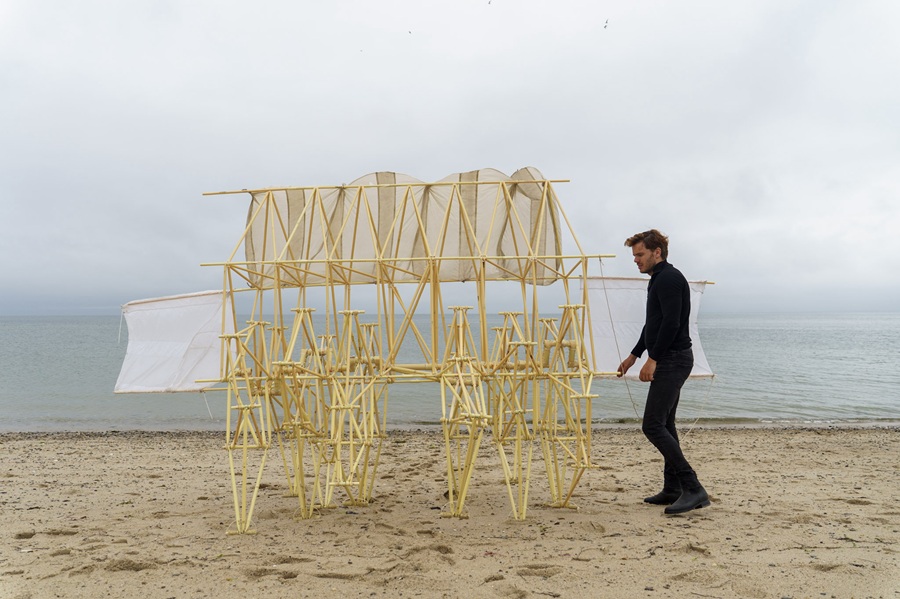
Zach stood on the outdoor stage at Castle Hill’s Edgewood Farm in Truro on July 9 surrounded by 20 people and bundles of PVC pipes and zip ties. Over the next three hours, the group would turn these simple materials into a kinetic animal-like sculpture made to walk on sand.
The beasts have evolved since the first of their kind. On the Strandbeest website, a complicated family tree starting in 1989 and extending to the present lists species names in a fictionalized takeoff on Latin, including “Vaporis Vermiculus,” “Suspendisse Duabus Caudis,” and “Multi Tripodes.”
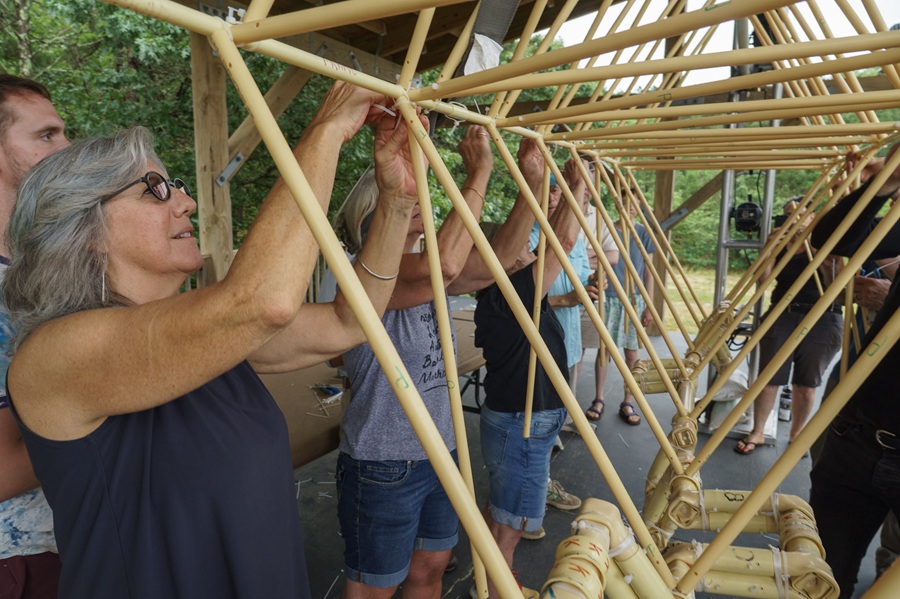
Each winter, Theo sketches and builds a new species of Strandbeest. In the summer, he takes the beast to the beach, testing it to determine what further developments are needed. When autumn comes, he declares the species extinct and its parts become “fossils,” Zach says. They get re-used or are shown in exhibitions.
The Strandbeest species range in size; some have wings; some have specific survival skills. “One beast had a tube that sensed water,” Zach says. “Once water was sensed, the beast would automatically walk the other way. The sea is the natural enemy of the Strandbeest.”
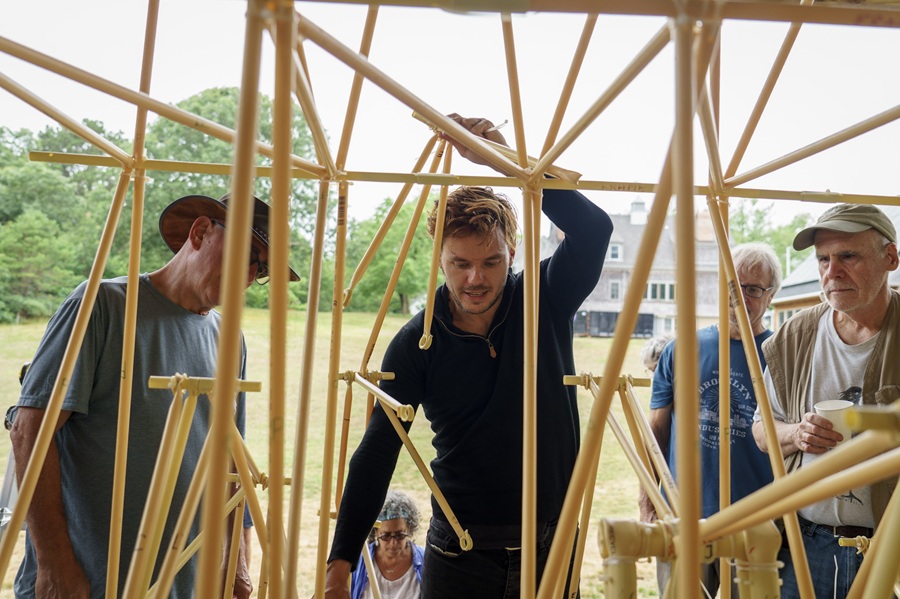
The one coming to life at Edgewood Farm would be nine feet wide and six feet tall, a Strandbeest of the species “Animaris Ordis,” says Zach. It’s a specimen he uses specifically for Strandbeest workshops, which he’s been leading since 2022. He carries the parts around in two suitcases.
To begin, Zach broke the group into four teams: upper leg, lower leg, torso, and spine. “The beast has eight hips and twelve legs,” he says. Despite the limited materials — “The most significant tool we used were zip tie cutters,” says participant Josh Seiden — construction was a beast of its own. Seiden, who lives in Brooklyn and Truro, recalls a warning given by Zach at the start of the workshop: “If we make one mistake, the thing won’t work.”
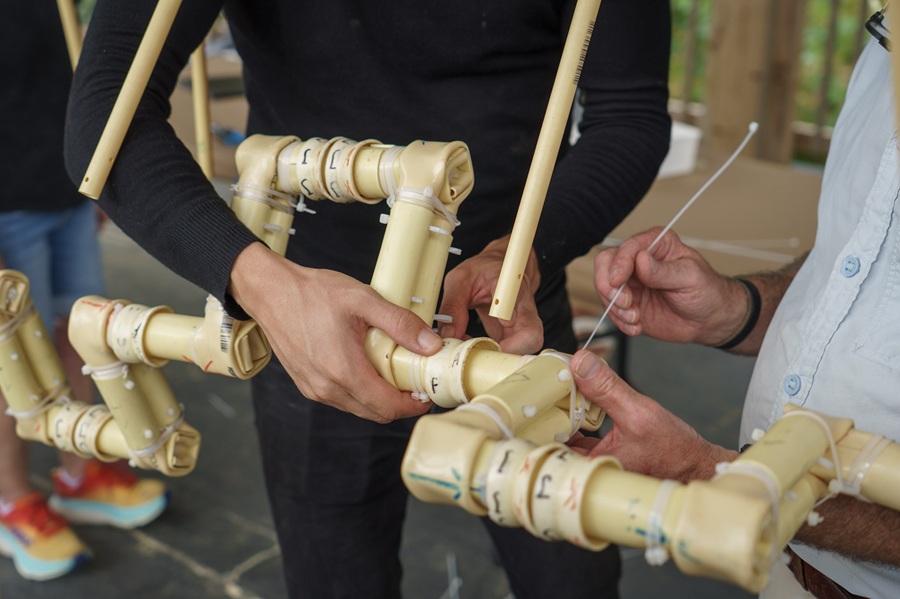
Once each team had completed its piece of the construction, they came together to “insert the hips and attach the knees and toes,” says Zach. A mistake was found: “We had built all of the leg assemblies wrong,” says Seiden. Every leg, made of many connecting links, had segments flipped in the wrong direction. This would prevent the legs from properly spinning around the axle of the spine. Two participants immediately stepped in, he says, as an emergency surgical team and fixed the problem.
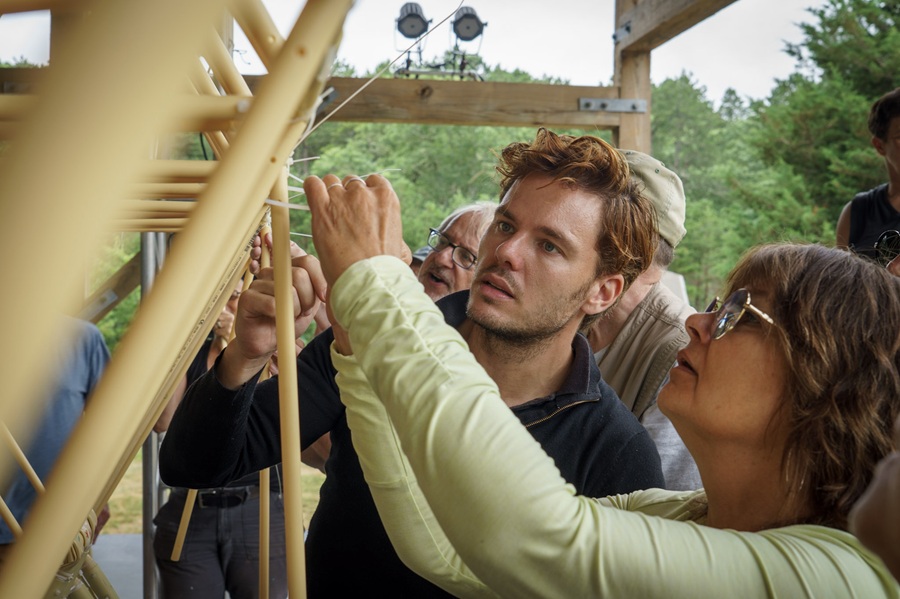
Now, suspended by a frame over its creators like a car at a repair shop or a large animal at the vet, the Strandbeest took shape. Zach tied three light plastic sails to the animal’s sides and top. The beast was ready to walk.
After helping load the creature onto a pickup, people scrambled into their cars to follow the Strandbeest to Corn Hill Beach. “We had an informal parade down Route 6,” Seiden says. “There were a dozen cars with their flashers on following the truck.”
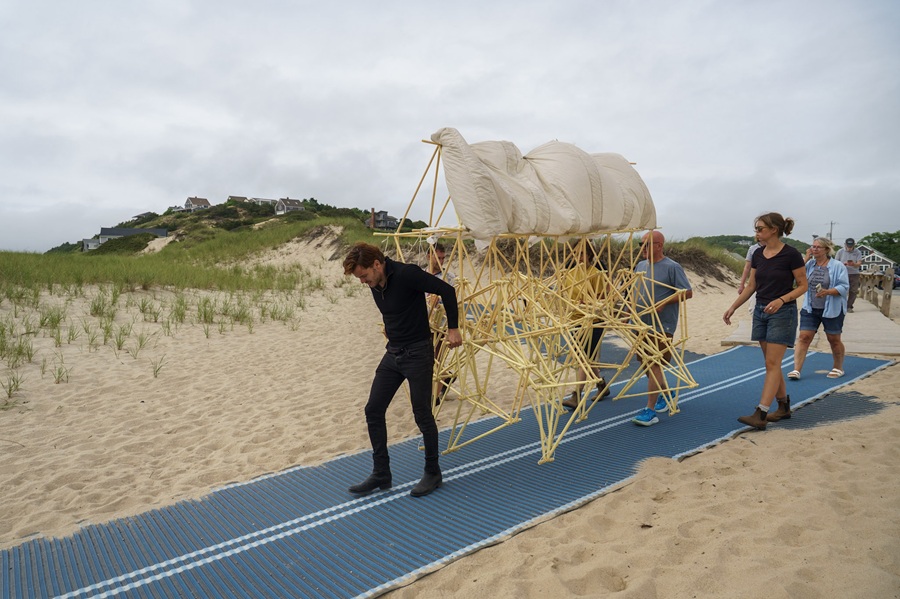
Once on the beach, there wasn’t quite enough wind to power the Strandbeest on its own. Jansen assisted the creature by pulling it along the sand, its many geometric limbs stepping with all the grace of a living thing. A crowd looked on, mesmerized.
Seeing people respond enthusiastically to the beast “never gets old,” says Zach.



